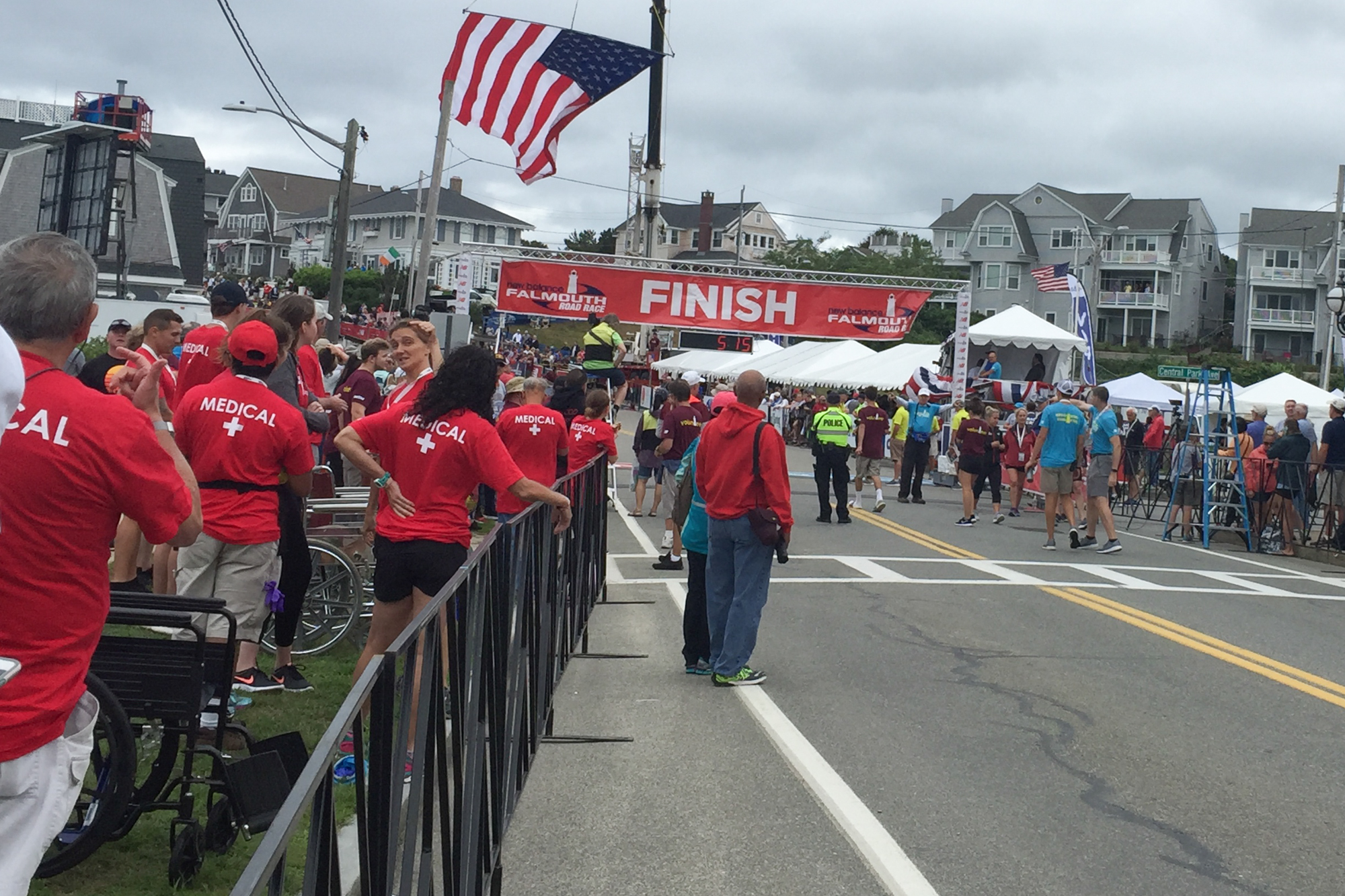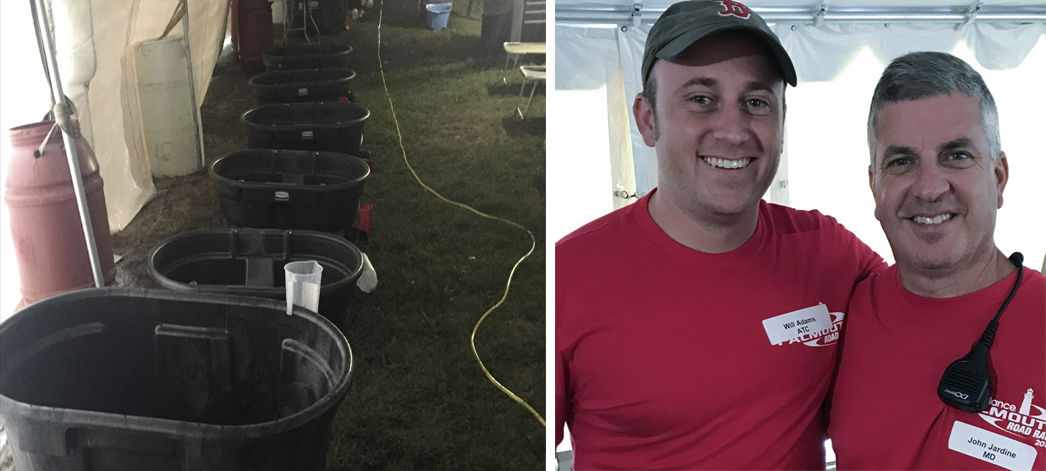
What if I told you that you could save someone’s life with just a tub filled with ice and water? While some people might be skeptical, if you were to ask any of the almost 500 runners treated for Exertional Heat Stroke (EHS) throughout the history of the Falmouth Road Race, I think they would agree.
This summer, on August 19, 2018, the 46th running of the Falmouth Road Race was held. Twelve thousand nine hundred runners embarked on a 7-mile journey from the starting line in Woods Hole, Massachusetts to the finish line in Falmouth, Massachusetts.
This year also marked my eighth year as a medical volunteer at the Falmouth Road Race, where I joined over 200 other healthcare providers (physicians, nurses, athletic trainers, and physical therapists) to care for the runners needing medical attention during the race.

As the Falmouth Road Race takes place in mid-August, the number of runners treated for EHS averages roughly 15-20 cases per year depending on conditions. For example, this year, with overcast skies and a high of 70°F, only 8 runners were treated for EHS . In 2015, with temperatures in the mid 80s with full sun and high humidity, 42 runners were treated for EHS .
EHS is a medical emergency caused by the inability of the body to regulate internal temperature during physical activity. While the condition is potentially catastrophic and can lead to long-term complications and even death, it is also completely survivable if treated promptly. The Falmouth Road Race is a testament to this fact. The race boasts a 100% survival rate in runners succumbing to EHS during the race.
This year I had the opportunity to use my expertise in heat-related illness and also my clinical skills as an Athletic Trainer to assist in the care of the runners being admitted into the medical tent at the finish line. I was on a team that treated one of the 8 runners suffering from EHS during the race. This was 33rd EHS patient I have treated at Falmouth Road Race over the years, and the 50th EHS patient I treated during my clinical and professional career.

This particular patient was a 21-year-old female who had come into the medical tent with the assistance of the volunteers stationed at the finish line. When a runner presents at the triage station the nurses are aware of the two criteria that define EHS : 1- an altered mental status and 2- a rectal temperature of greater than 105°F .
When the patient appeared to have an altered mental status, one of the two key diagnostic criteria for EHS, the nurse at the station assessed her rectal temperature, the only accurate method of assessing internal body temperature in exercising individuals, and the second key diagnostic criterion for diagnosis EHS. This runner’s tmperature was 107.1°F.
Following the assessment of her body temperature, we brought her to one of the nearby 70-gallon tubs filled with ice water and immediately immersed her entire body in the ice water to begin cooling her down. Cold water immersion is the current best medical practice for treating EHS and yields the highest cooling rates due to water’s capacity for transferring heat.

Following the simple steps of immediate recognition with observable signs/symptoms and accurate assessment of internal body temperature allows us to begin treatment right away. To ensure that the treatment is effective, cooling continues until the runner’s body temperature reaches 102°F.
Treatment within this critical 30-minute window (referred to sometimes as the “The Golden Half-Hour”) is essential to ensure minimal damage to the proteins, cells, tissues, and internal organs within the body, and to optimize the chances of survival.
Thinking back on this year’s race as well as the years before and the many individuals that I have treated with EHS, it is still surreal to me that with this quick and expedient care, these individuals are able to be home having dinner with their families the same evening.
While this race is just one example of many, it underlines the importance of using best practices for the management and care of EHS. This treatment has saved hundreds, if not thousands of lives. Continued efforts are needed to ensure these practices are adopted at all levels of sport and physical activity.
Until the issues surrounding the implementation of appropriate policies and procedures for the management and care of EHS are addressed, we will continue to have the senseless loss of individuals to this condition.
Dr. William Adams is an Assistant Professor in the Department of Kinesiology. Among other topics, he specializes in the prevention, management, and care of exertional heat stroke. Dr. Adams can be contacted at wmadams@uncg.edu.
Interested in the Athletic Training Program at UNCG ?
- See program page for the Master of Science in Athletic Training (MSAT) in Department of Kinesiology
- Read “Preparing Athletic Trainers
For the Front Line” in UNCG NOW